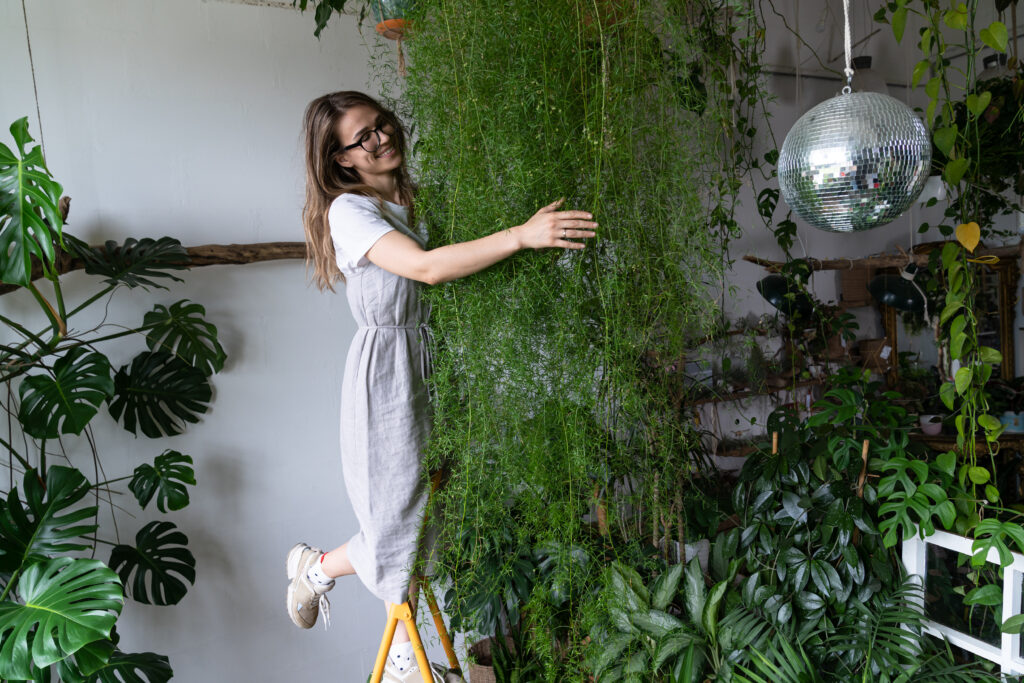Transform your apartment into a lush urban oasis with space-saving vertical garden systems. Whether dealing with limited floor space or simply wanting to maximize your growing area, vertical gardens offer the perfect solution for bringing more greenery into your home while maintaining a sleek, modern aesthetic.
Why Choose Vertical Gardening?
Vertical gardens aren’t just trendy but practical solutions for urban dwellers. These innovative systems allow you to grow more plants in less space, improve air quality, and create stunning living walls that double as natural art. Many apartment dwellers find vertical gardens the perfect solution when floor space is at a premium, as they use often-overlooked wall space while creating a stunning visual impact.
Top Vertical Garden Systems for Apartments
Regarding vertical garden systems, there are several excellent options to consider. Modular wall-mounted systems are perhaps the most versatile, offering easy expansion and reconfiguration options. These systems typically feature individual pockets for plants and often include built-in irrigation options, making them perfect for creating living walls of any size.
Hydroponic tower gardens represent another innovative solution, particularly well-suited for growing herbs and vegetables. These space-efficient systems use water-saving technology and eliminate the need for soil, making them incredibly clean and efficient for indoor use. Many urban gardeners find these systems ideal for growing edible plants year-round.
Stackable planter systems offer yet another approach, proving especially valuable for balconies and corners. These systems often incorporate self-watering features and can be easily maintained. Their adjustable height options and mobility make them perfect for those who regularly refresh their space or need flexibility in their garden setup.

Key Features to Consider
Light integration plays a crucial role in the success of any vertical garden system. Many modern systems come with built-in grow lights, perfect for low-light areas. These typically include timer controls for automated operation and adjustable positioning options. When selecting a system with integrated lighting, look for energy-efficient LED options that provide appropriate spectrum coverage for your intended plants.
Watering systems vary significantly between different vertical garden solutions. The most convenient options include self-watering capabilities or drip irrigation systems with water reservoirs. Advanced systems often incorporate moisture indicators to help you maintain optimal growing conditions. When evaluating watering systems, consider both their efficiency and ease of maintenance.
Maintenance access should be a top priority when selecting your vertical garden system, and you should look for designs that allow easy plant replacement and convenient watering points. The best systems offer tool-free maintenance options and simple cleaning access, making routine care more manageable.
Price Points and Options
The market offers vertical gardening solutions across various price points. Entry-level options, typically $50-$150, include pocket-hanging planters and essential stackable containers. These systems provide beginners with an excellent starting point while offering attractive and functional growing solutions.
Mid-range systems, priced between $150-$500, often incorporate innovative self-watering features and modular wall units. These systems typically offer more sophisticated features and outstanding customization options, making them popular among experienced indoor gardeners.
Premium solutions, priced at $500 and above, represent the cutting edge of vertical gardening technology. These systems often include automated hydroponic features, designer aesthetics, and smart-tech integration. While the initial investment is higher, these systems typically offer the most comprehensive growing solutions and require minimal maintenance.
Installation and Setup
Weight management represents a critical consideration when installing any vertical garden system. Before mounting your system, carefully assess wall strength and use appropriate anchors. Professional installation might be worth considering for heavier systems. Remember to account for the full weight of the system when saturated with water.
Location planning can significantly impact your garden’s success. Consider available natural light, access to power outlets, and proximity to water sources. Temperature consistency also plays a crucial role, so avoid areas near heating vents or air conditioning units that might create problematic microclimates.
Proper waterproofing proves essential for protecting your walls and floors. Install appropriate moisture barriers and ensure adequate drainage systems are in place. Regular maintenance checks help prevent water damage and ensure your system continues operating efficiently.
Plant Selection and Care
Choosing the right plants for your vertical garden system can make the difference between success and frustration. Plants with trailing growth habits work beautifully in vertical settings, creating cascading effects that enhance the visual impact. Consider mixing plants with similar water and light requirements to simplify maintenance.
Hardy plants like pothos, spider plants, and various succulents offer excellent starting points for beginners. These plants tolerate a range of conditions and forgive occasional maintenance lapses. As you gain confidence, you might expand to more challenging species like herbs, leafy greens, or orchids.
Daily care routines should include checking water levels and monitoring plant health. Weekly maintenance might involve cleaning system components and checking for pest issues, while monthly tasks should consist of deeper cleaning and structural checks. This regular attention helps ensure your vertical garden remains healthy and vibrant.
Smart Technology Integration
Creating your ideal vertical garden takes time and attention, but the rewards are worth the effort. Whether you choose a simple hanging system or invest in a premium automated solution, proper planning, and regular maintenance will help ensure your success. Your vertical garden will soon become a stunning focal point in your apartment while providing all the benefits of indoor gardening in a space-efficient package.
Modern vertical gardens increasingly incorporate innovative technology to enhance their functionality. Automated watering systems, climate monitoring, and mobile app controls make maintenance more convenient than ever. These features help ensure optimal growing conditions while minimizing the time required for daily care.




